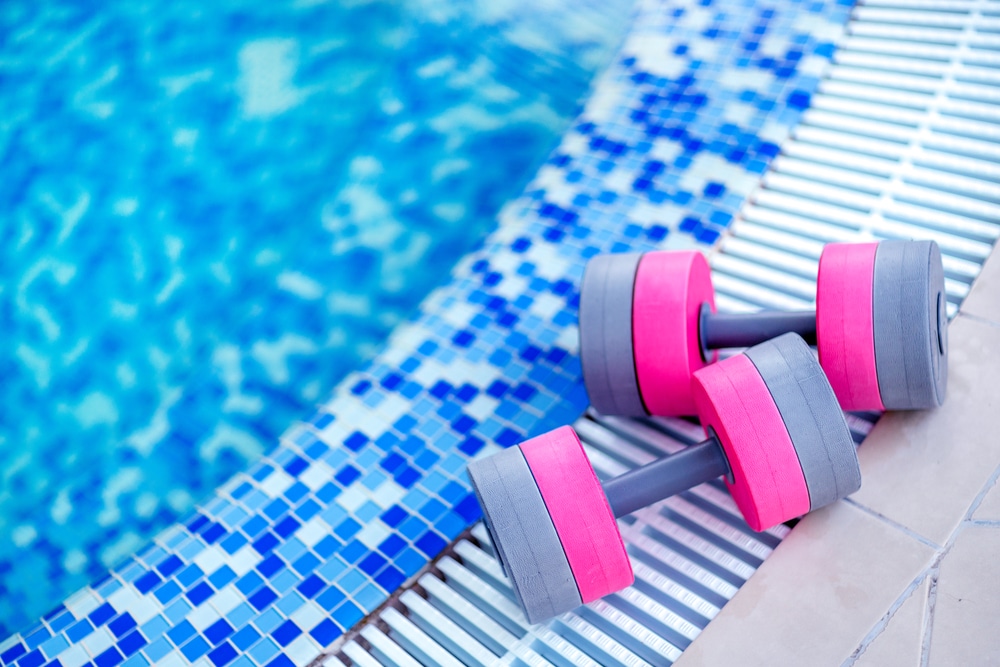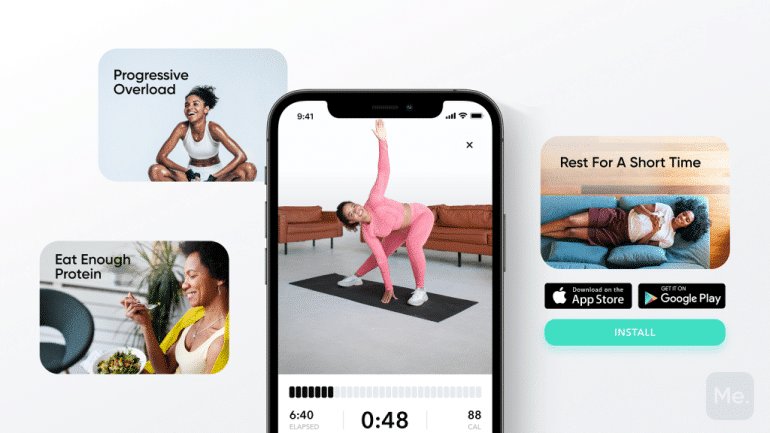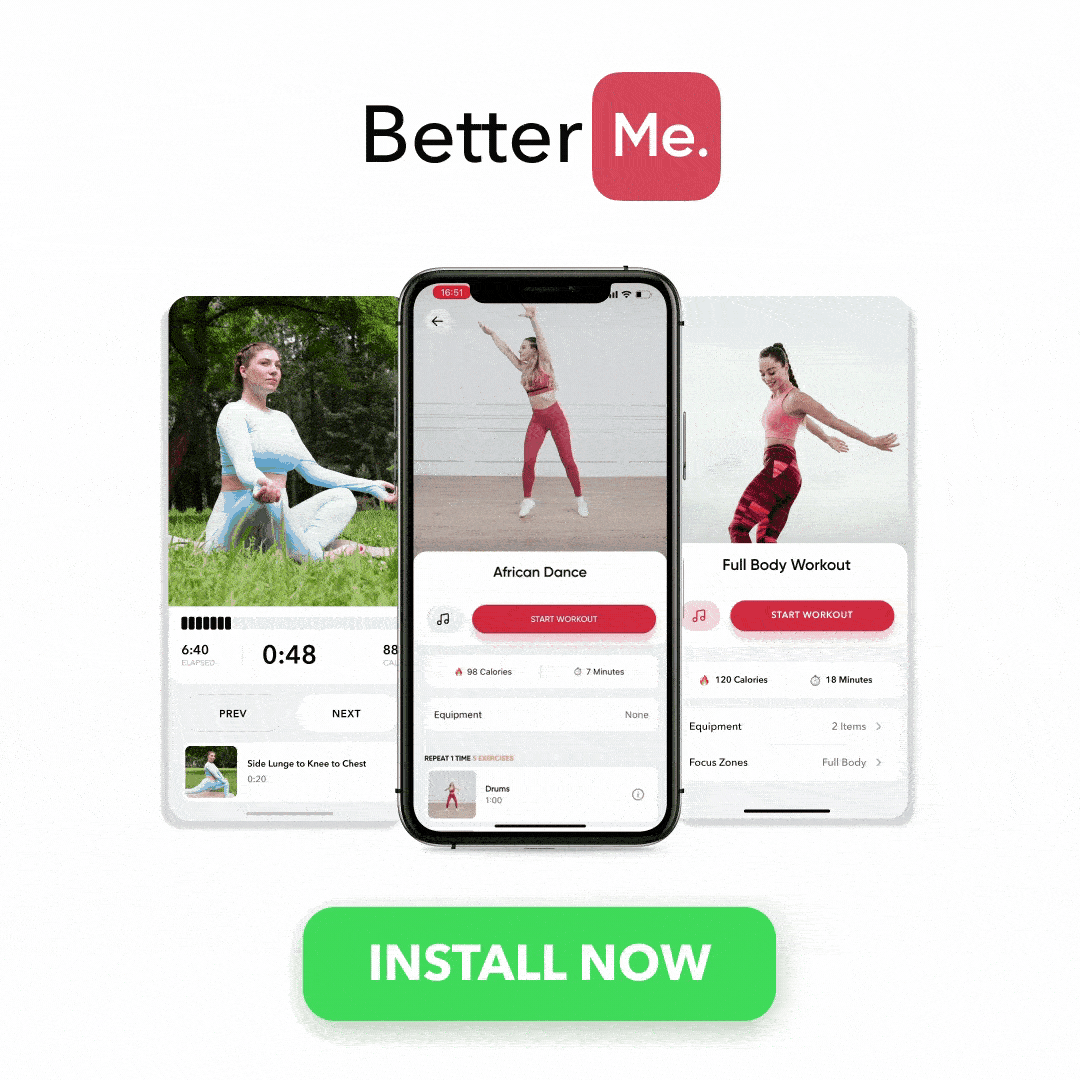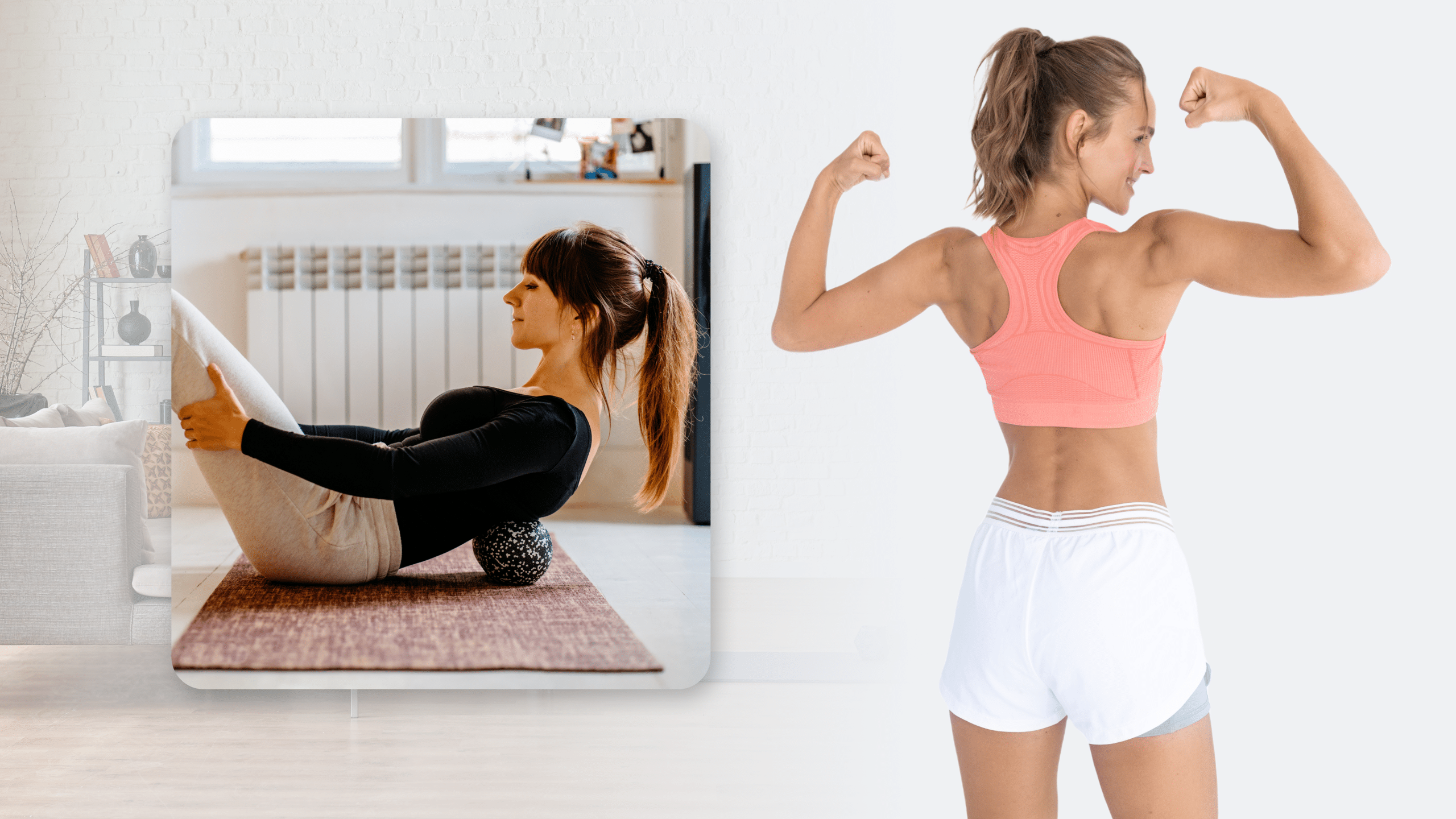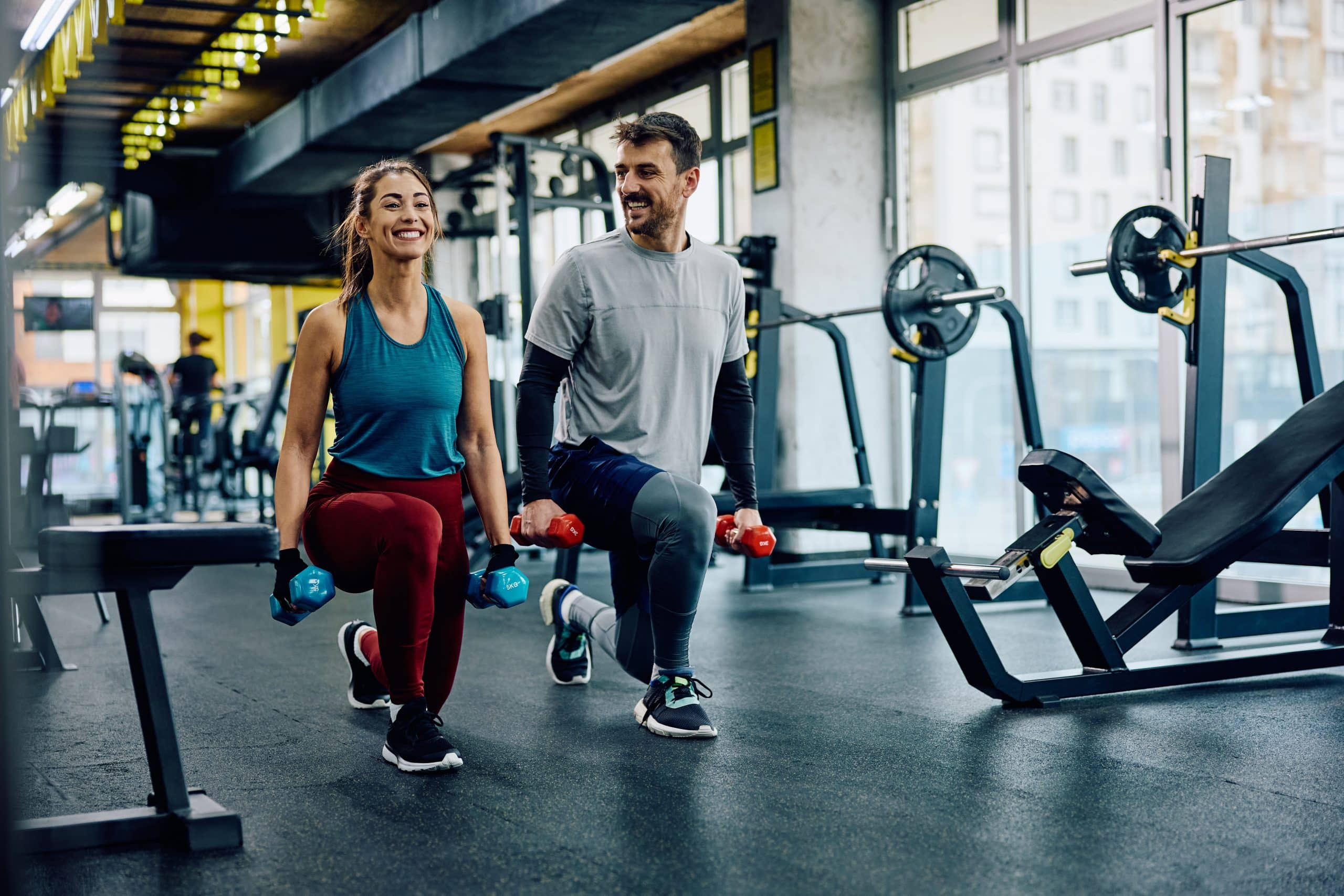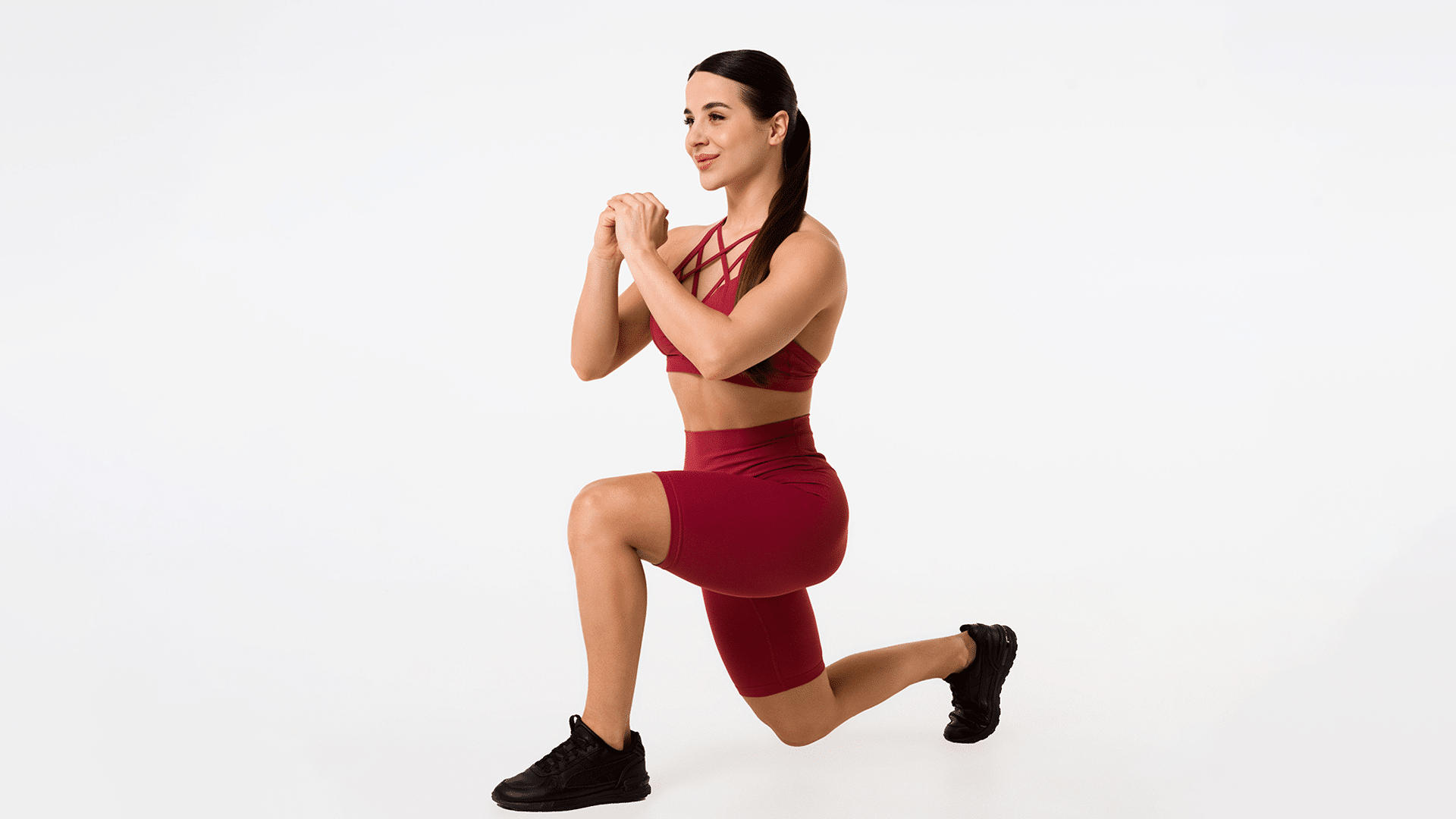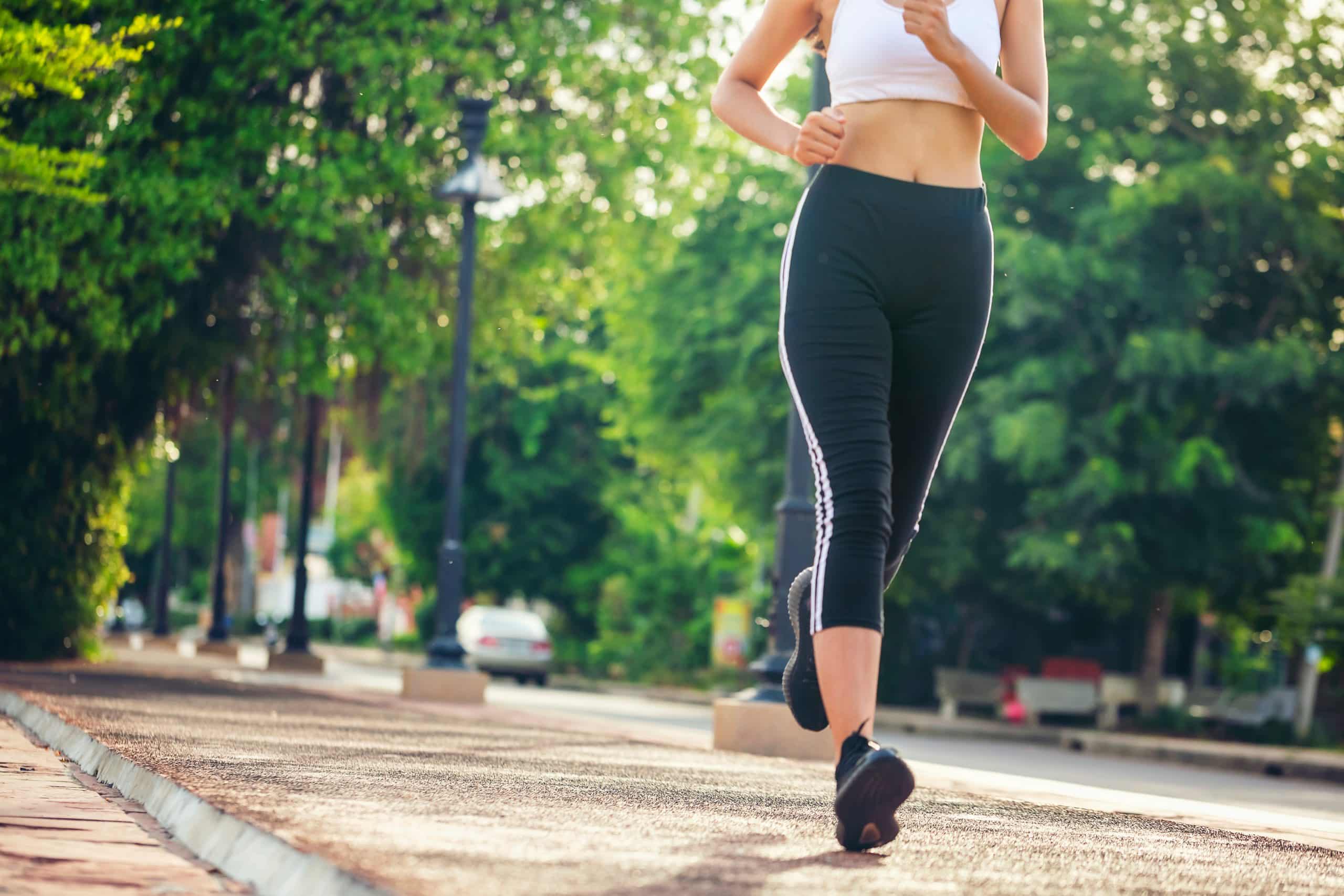Water is good for you, and not only when you drink it. Exercising in water can have many benefits, both physical and mental. The buoyancy of water supports your body and takes the strain off of joints and muscles. Its resistance helps build strength. Moreover, the water temperature can be soothing or invigorating, depending on what you need. On top of that, the sensation of being surrounded by water can be calming and stress-reducing. In this article, we’ll discuss the benefits of aquatic therapy exercises and how to do them.
What Is Aquatic Therapy Good For?
There are many reasons to give aquatic exercises a try:
They Are Low Impact
One of the best things about water exercises is that they are low impact. This means they are much kinder on your joints than other types of exercise, such as running.
If you have joint pain or are recovering from an injury, aquatic therapy exercises can be a great way to stay active without exacerbating your symptoms (8).
Suitable For All Fitness Levels
Another great thing about water exercises is that they can be adapted to suit anyone, no matter what their fitness level may be. Whether you’re a beginner or a seasoned athlete, there will be an aquatic exercise that’s right for you.
Can Help With Weight Loss
If you’re trying to lose weight, water exercises can be a great addition to your workout routine. Not only do they help burn calories, but they can also help tone your body (2).
A Great Way To Relieve Stress
Exercising in water can be a great way to relax and de-stress. The sensation of the water can be very calming and the movement can help release tension from your muscles as well (3).
Can Improve Your Flexibility
Flexibility is the measure of how far your joints can move through their range of motion. Aquatic therapy exercises can help improve your flexibility by stretching your muscles and joints in a gentle way (6).
Read More: Swim Workouts For Beginners And Intermediate Level Swimmers
Can Aid Pain Management
Chronic pain can be debilitating, but exercise is one of the best ways to help manage it. Aquatic therapy exercises can be a great way to get moving when you’re in pain, as they provide gentle movement and support (8).
Can Improve Your Agility
Agility is the ability to move quickly and easily. Many water exercises require you to move your body in new and different ways, which can help improve your agility over time (8).
Can Increase Your Strength
Water exercises provide resistance, which can help build strength. The added resistance of the water can also help improve your muscular endurance (8).
Can Improve Your Cardiovascular Fitness
Cardiovascular fitness is the measure of how well your heart and lungs work together to supply oxygen to your muscles. Aquatic therapy exercises can help improve your cardiovascular fitness by making your heart work harder to pump blood through your body (8).
Who Should Try Aquatic Therapy?
Aquatic therapy is well-suited for people who are:
Suffering From Certain Medical Conditions
Many conditions can benefit from and improve with pool exercise, including:
-
Arthritis And Other Rheumatoid Conditions
Arthritis is characterized by inflammation of the joints, which can cause pain and stiffness. Aquatic therapy can help reduce this pain and stiffness by providing a low-impact environment in which to exercise (5).
Other rheumatoid conditions, such as fibromyalgia and lupus, can also be helped by aquatic therapy (5).
-
Cardiovascular Problems
People who have had heart attacks, strokes, or other cardiovascular problems can often benefit from exercising in the water. The water’s resistance helps increase strength and endurance without putting too much strain on the heart (8).
-
Neurological Disorders
Aquatic therapy can also be helpful for people who have neurological disorders, such as Parkinson’s disease, multiple sclerosis, cerebral palsy, and Alzheimer’s disease (7).
The water can provide support and stability, which can help improve balance and coordination. The warm water can also help to relax muscles and ease pain (7).
-
Back Pain
Exercising in water can take the pressure off of painful areas of the back and spine. This can help reduce pain and improve mobility (8).
-
Joint And Muscle Pain
The buoyancy of water can help reduce the impact on joints and muscles. This can be especially helpful for people who are suffering from pain due to arthritis, tendonitis, or other conditions (8).
-
Developmental Disorders
Aquatic therapy can also be beneficial for children with developmental disorders, such as autism, spinal muscular atrophy, and cerebral palsy. The environment can provide a calming and supportive setting in which to help improve social skills, communication, and gross motor skills (4).
BetterMe is your fast-track ticket to a long-lasting weight loss! Tailor your fitness journey and maximize your results with just a couple of swipes!
Seeking A Break From Traditional Exercise Routines
Aquatic therapy can provide a refreshing and fun break from traditional land-based exercise routines. The water can help add an element of challenge while also providing support and stability.
At Risk Of Falling
People who are at risk of falling can often benefit from aquatic therapy. The water can provide support and stability, which can help improve balance and coordination.
Who Should Not Try Aquatic Therapy?
There are some people who should not try aquatic therapy, such as those (1):
- With uncontrolled high blood pressure or heart conditions
- With open wounds or skin infections
- With incontinence issues
- Who are pregnant (only applies to therapy in warm water)
- With limited endurance or range of motion
How Does Aquatic Therapy Work?
Aquatic therapy exercises are typically done in a heated pool. The therapist will work with you to develop a personalized program that takes into account your specific goals and needs.
The therapist may start by having you walk or jog in the water. As you get stronger, you may progress to more challenging exercises, such as running or jumping.
What Tools Are Used In Aquatic Therapy?
There are a variety of tools that can be used in aquatic therapy. They include:
Theraband
This is a type of resistance band that can be used to add resistance to exercises. It is often used to help improve strength and range of motion.
Noodles
Noodles are often used for balance and stability training. They can also be used to help support the body in certain exercises.
Water Weights
Water weights are often used to add resistance to exercises. They come in a variety of sizes and can be adjusted to meet your needs.
Read More: Planning To Visit An Exercise Swimming Pool? Here Are 8 Moves You Should Try
Kickboards
Kickboards can be used for a variety of exercises, such as swimming laps or doing leg kick exercises.
Anti-Slip Mat
An anti-slip mat can be used to help keep you stable while doing exercises in the pool.
Bicycles
Bicycles can be used to help improve strength and range of motion. They can also be used for balance and coordination training.
What Exercises Are Done In Aquatic Therapy?
Aquatic therapy exercises can vary depending on your individual needs and goals.
Some common exercises include:
Walking
This is often the starting point for many people. Walking in the water provides resistance, which can help improve strength and endurance.
Jogging
Jogging in the water can provide a low-impact workout. It can help improve cardiovascular fitness and leg strength.
Leg Kick Exercises
These exercises can help strengthen the legs and improve the range of motion. They are often done with a kickboard or noodle.
Arm Exercises
These exercises can help strengthen the arms and improve the range of motion. They may be done with theraband, water weights, or noodles.
Balance And Stability Training
This type of training can help improve balance and coordination. It may be done with the use of a noodle or kickboard.
If you’ve mustered up the courage to crush your weight loss goal, let Betterme take the sting out of this demanding process. Our app will help you restructure your habits, remold your life and crank up your fitness results!
Step-By-Step Guide To Doing Aquatic Therapy Exercises
Before you begin, it is important to warm up. This can be done by walking or jogging in place for a few minutes.
Start By Walking In The Water
You can do this with or without a noodle. If you are using a noodle, hold it in front of you with both hands.
Once You Have Warmed Up, Begin Jogging In Place
If you are using a noodle, hold it in front of you with both hands. After a minute or two of jogging, choose at least three of the following exercises to do for 1 to 2 minutes each:
- High Knees: Bring your knees up as high as you can, alternating legs.
- Butt Kicks: Kick your heels back towards your butt, alternating legs.
- Side Shuffle: Step to the side with one leg, then bring the other leg to meet it. Repeat, going back and forth.
- Carioca: Cross one leg in front of the other, then bring the back leg through to meet the front leg. Repeat, going back and forth.
- Skaters: Jump side to side, like you are skating on ice.
- Marching: Lift your knees up high, as if you are marching.
Cool Down
After you have completed the exercises, cool down by walking in place for a few minutes. Repeat the entire routine 2 to 3 times per week for best results.
How To Get Started With Aquatic Therapy?
If you are interested in trying aquatic therapy, there are a few things you need to do to get started.
First, you will need to find a therapist who is certified in aquatic therapy. You can ask your doctor for a referral or look for a therapist on the Aquatic Therapy & Rehabilitation Institute website.
Next, you will need to schedule an initial evaluation with the therapist. This will help the therapist develop a personalized program for you.
Finally, you will need to find a pool that is suitable for aquatic therapy. The therapist will be able to provide you with a list of options in your area.
The Bottom Line
Aquatic therapy can be a great way to improve your strength, endurance, and range of motion. It is important to work with a certified therapist to ensure that you are doing the exercises safely and effectively.
DISCLAIMER:
This article is intended for general informational purposes only and does not address individual circumstances. It is not a substitute for professional advice or help and should not be relied on to make decisions of any kind. Any action you take upon the information presented in this article is strictly at your own risk and responsibility!
SOURCES:
- Aquatic Therapy (n.d., sciencedirect.com)
- Calories burned in 30 minutes for people of three different weights (2021, harvard.edu)
- Effects of aquatic exercise on mental health, functional autonomy and oxidative stress in depressed elderly individuals: A randomized controlled trial (2019, nih.gov)
- Effects of Aquatic Therapy for Children with Autism Spectrum Disorder on Social Competence and Quality of Life: A Mixed Methods Study (2021, pubmed.gov)
- Hydrotherapy for the Treatment of Pain in People with Multiple Sclerosis: A Randomized Controlled Trial (2011, nih.gov)
- Is water-based exercise training sufficient to improve physical fitness in the elderly (2012, biomedcentral.com)
- Scientific Evidence-Based Effects of Hydrotherapy on Various Systems of the Body (2012, nih.gov)
- The effect of 12 weeks water aerobics on health status and physical fitness: An ecological approach (2018, nih.gov)
